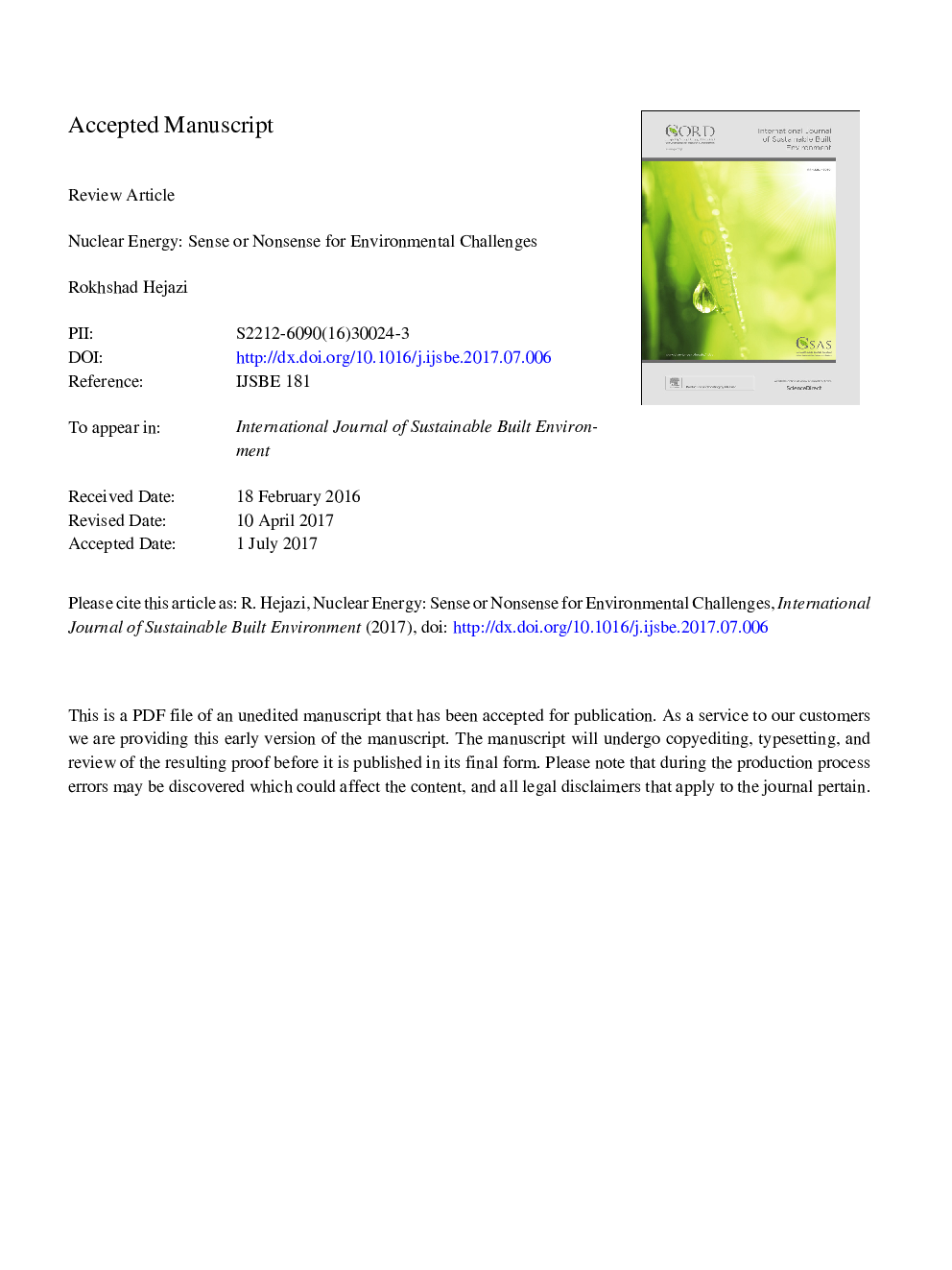| Article ID | Journal | Published Year | Pages | File Type |
|---|---|---|---|---|
| 6659520 | International Journal of Sustainable Built Environment | 2017 | 23 Pages |
Abstract
Environment is subject to many pressures. Climate change and the global warming constitute an additional pressure. The “climate change” and its consequences are more important than other challenges in 21 century. The global temperature has risen by more than 2.5 °C in recent years. Similarly, a global temperature rise of more than 2.5 °C increases the absolute number of people at risk of hunger by 80 million. Recent estimates indicate that 25% of the world's mammals and 12% of birds are at significant risk of global extinction. The main reason for global warming is CO2 increase that is obtained from burn reaction. According to California university, CO2 emissions result from emissions of: transportation 49%, electricity 30%, industrial 11%, residential 7% and commercial 3%. In the mean time, CO2 concentration is 360 ppm even, if severity plan will be applied as per Kyoto protocol it will arrive at 450-650 ppm in 2100. Thus, there is a global resolution for declining CO2 emission and one of the practical approaches is CO2 decreasing in electricity sector. Each of energies has strengths and weaknesses and we focus more on nuclear energy because its CO2 emission is zero. It should be added, in most of countries there is a tax for gas e.g. in the U.K. 3.4$/gallon and in Italy 2.53 $/gallon, so fossil fuel is an income for their governments but for nuclear energy government pays subsidies. Therefore it is not possible to debate about it before removing tax and subsidy. In recent years, it has been stated about tax on carbon production that it is a step forward to low carbon economy and finding the real cost of fossil fuel with attention to external costs in the environment.
Related Topics
Physical Sciences and Engineering
Chemical Engineering
Chemical Engineering (General)
Authors
Rokhshad Hejazi,
